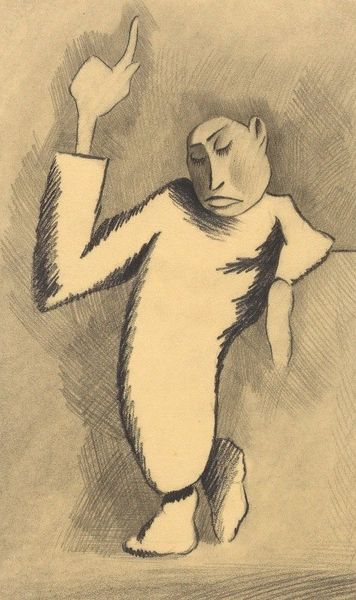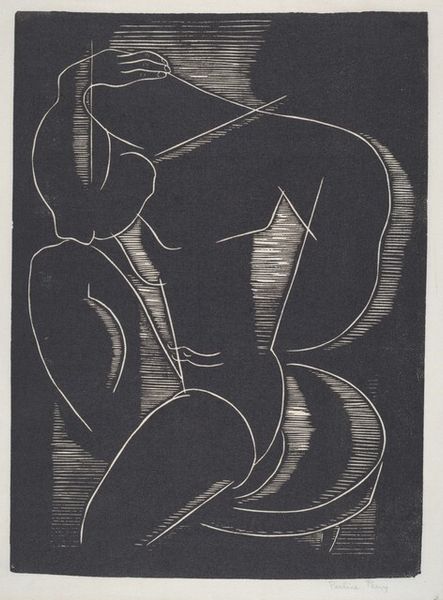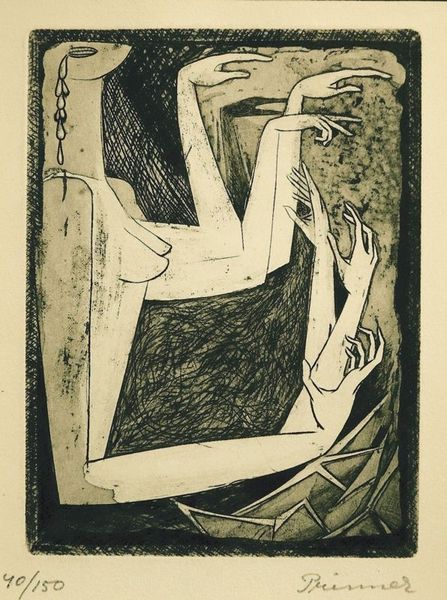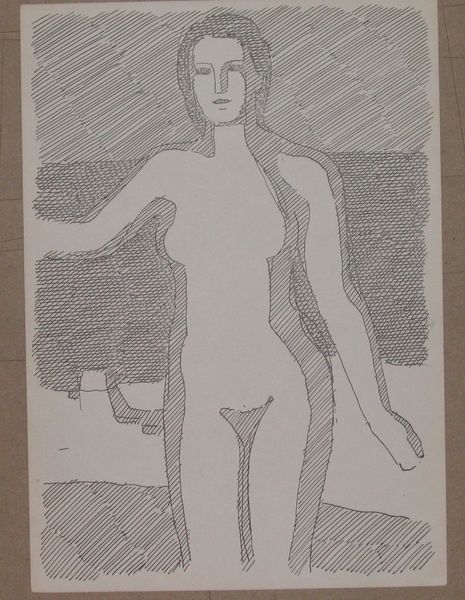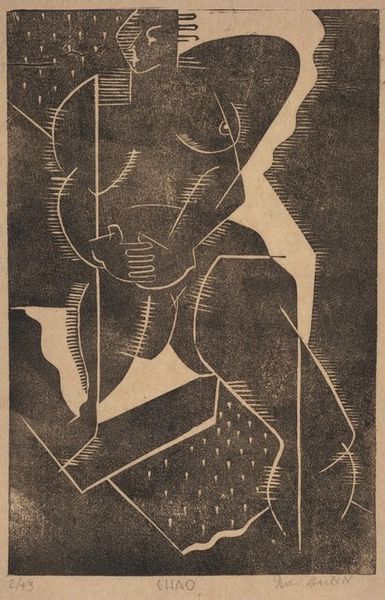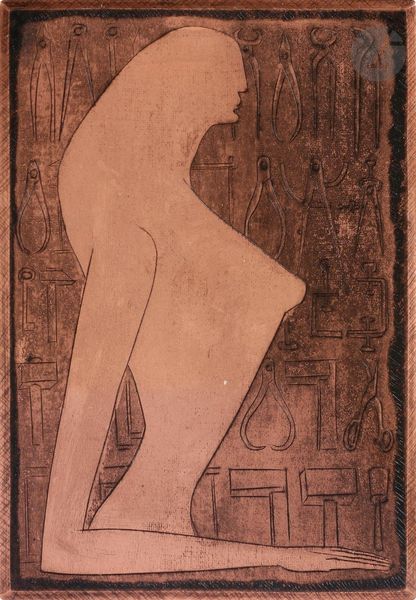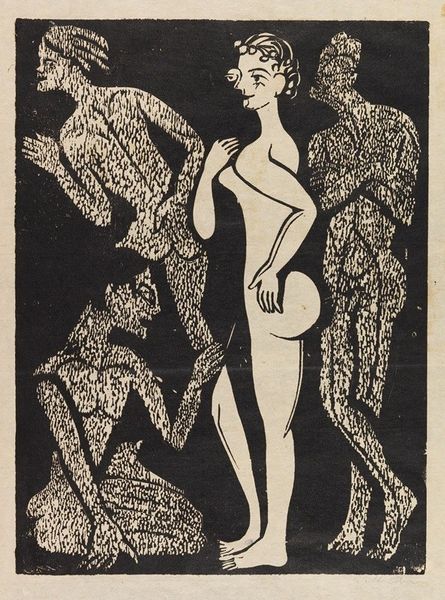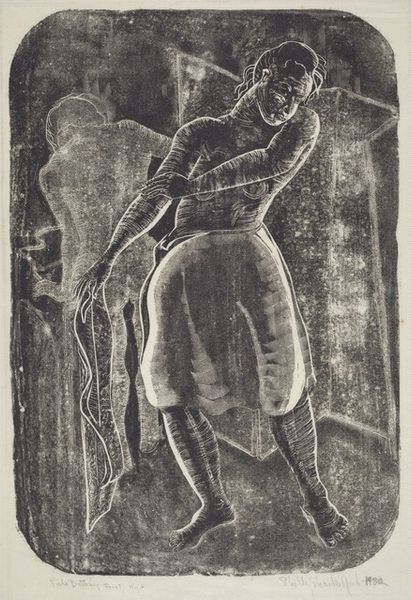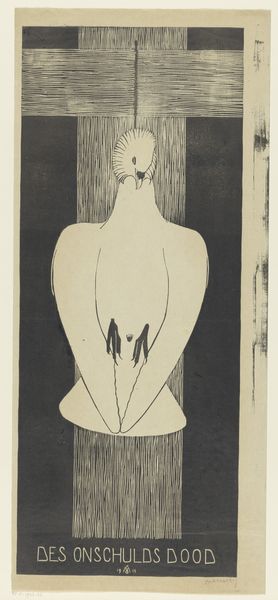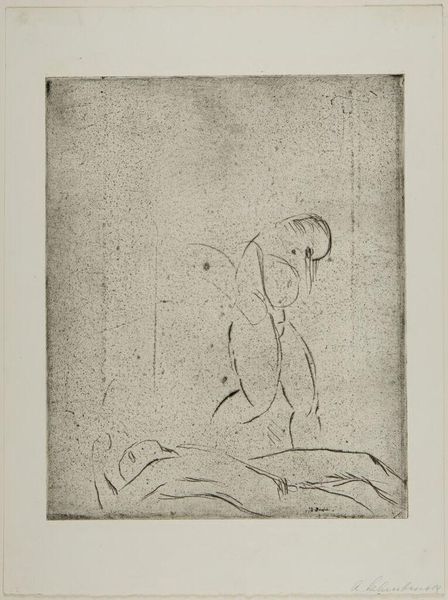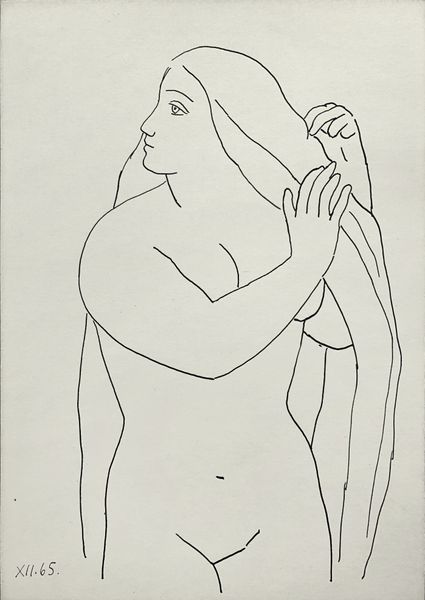
Tamara. Illustration to the Poem by Shota Rustaveli 'The Knight in the Panther's Skin' 1965
0:00
0:00
hryhoriihavrylenko
Private Collection
drawing, pencil
#
portrait
#
pencil drawn
#
drawing
#
figuration
#
pencil drawing
#
pencil
#
line
Copyright: Hryhorii Havrylenko,Fair Use
Editor: This is Hryhorii Havrylenko's 1965 pencil drawing, "Tamara. Illustration to the Poem by Shota Rustaveli 'The Knight in the Panther's Skin.'" It's a very striking portrait, very linear. What strikes you most about this piece? Curator: I find it fascinating how Havrylenko uses such a seemingly simple medium to explore themes of female representation and cultural identity within Soviet Georgia. The choice of illustrating Rustaveli's poem, a cornerstone of Georgian national identity, is not accidental. What does Tamara represent within the historical context of gender roles and power? Editor: That's interesting. I hadn't thought about the gender roles in play here, I just saw a very elegantly drawn figure. Is the "Knight in the Panther's Skin" significant in this regard? Curator: Absolutely. The poem itself, while celebrating chivalry and courage, also presents a nuanced depiction of female leadership and agency. How does Havrylenko's Tamara subvert or reinforce those traditional representations, especially considering the social and political expectations placed on women during the Soviet era? What visual clues support your analysis? Editor: Well, she looks both strong and contemplative, maybe even sad. I’m not sure. Her downward gaze seems significant. Is she constrained by her role, or empowered by it? It is a compelling portrait but maybe it is left up to the viewer to determine the power dynamics within. Curator: Exactly. Havrylenko isn’t offering us easy answers. The power lies in the questioning, in prompting us to consider the complexities of identity, tradition, and representation, then and now. Editor: So it really invites a contemporary reading through the lens of feminism, even though it's based on much earlier themes. Curator: Precisely! It speaks to the enduring relevance of these narratives and the ongoing need to deconstruct and reimagine them. Editor: Thanks. I never thought of it that way; the dialogue between past and present really opens things up.
Comments
No comments
Be the first to comment and join the conversation on the ultimate creative platform.
